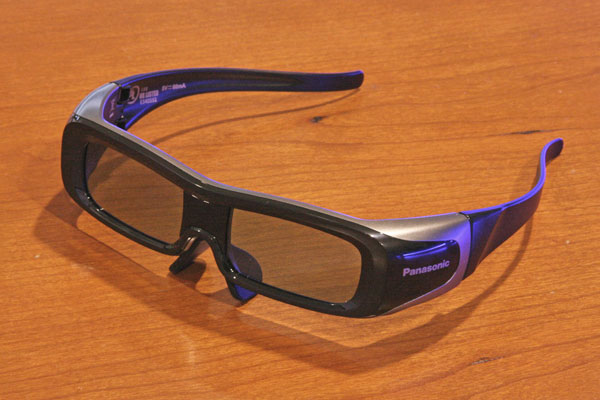Panasonic 2011 Blu-ray Players

Four new models were introducedthe DMP-BD75, BDT110, BDT210, and BDT310 (left to right in the photo above, not including the bright light bars below them). The BD75 is a basic 2D player, while the others are 3D-capable. All four feature a slimmer design and boot and load times twice as fast as last year's models, which was clearly demonstrated in a "race" between a BDT310 and a BD85. Also, the GUI (graphical user interface) has been updated very nicely, and you can upload any photo or graphic you want via the SD card slot to use as background wallpaper. Not only that, a new iPhone/iPod/iPad app provides remote control via DLNA.
Speaking of which, you can access content on any networked DLNA-compatible computers, and you can connect a media-storage device to the USB port and SD card slot. Also, VieraCast provides access to tons of Internet content. The BDT210 and 310 provide integrated Wi-Fi capabilities, while the 110 can be upgraded to include this feature.
Under the hood is the newest generation of Panasonic's UniPhier video processor that upscales standard-def DVDs and Internet video to 1080p. In the 3D models, the UniPhier also performs 2D-to-3D conversion, which is great for reviewers and installers because it lets us calibrate any 3D TV with 2D test patterns. In addition, there are now several controls to adjust the "strength" of the effect.
This process was demonstrated using the DVD of Star Wars III on a prototype TC-P55VT30 3D plasma, and to my eyes, the effect was quite subtletaking off the glasses, the displacement between the left and right images was about the same regardless of how near or far an object was supposed to be. According to Tetsuya Itani, a high-ranking Panasonic engineer in attendance, 2D-to-3D conversion is at roughly the same stage as interlaced-to-progressive processing was 15 years ago, which is a good point. He expects it to steadily improve over the next few years.
One cool new feature of the BDT110, 210, and 310 is Skype video using a Panasonic camera that retails for $99. Even cooler, you can record an audio or video outgoing message, and callers can leave audio or video messages if you have installed an SD memory card, turning the unit into a Skype answering machine!
Perhaps coolest of all is the touch-free sensor in the BDT210 and 310, which opens the disc drawer with a wave of your hand over the top. It reminded me of how Dr. Morbius and his daughter Altaira summoned Robbie the robot in Forbidden Planet.
But the best news is the pricing$99 for the BD75, $149 for the BDT110, $199 for the BDT210, and $229 for the BDT310, which is the only model with two HDMI outputs. All models except the 310 are available now, with the 310 coming in May.

To see the 3D demos, we got our first look at Panasonic's new active-shutter glasses, which are much improved over the first generation. The open sides have been replaced by a solid wrap-around designthank you very much! Also, there's now an on/off switch, and the battery is rechargeable. Finally, three sizes will be available, which will make it much easier to find a comfortable fit. I found them far better than last year's design in terms of comfort and blocking light from the sides.
























































